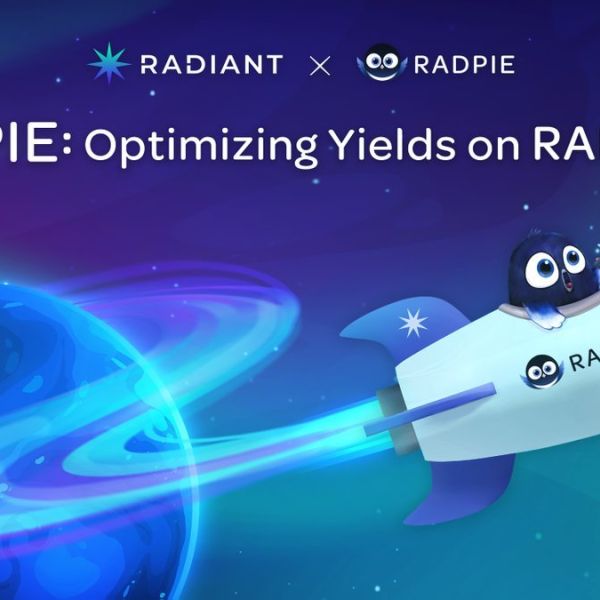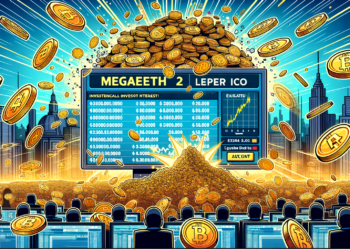Ethereum's V-Shaped Recovery: Institutional Whale Accumulation and ETF Inflows Signal a Bullish Turnaround
- Ethereum's 2025 V-shaped recovery follows a 12% August correction, driven by institutional whale accumulation and ETF inflows. - Whale wallets now control 22% of ETH supply, with staking yields (3.8%) and deflationary mechanics boosting long-term value. - Ethereum ETFs attracted $27.6B in August 2025, surpassing Bitcoin as regulatory clarity enables 29% supply staking. - Pectra/Dencun upgrades reduced gas fees by 90%, positioning Ethereum as the dominant smart contract infrastructure. - Technical indicat
Ethereum's recent price trajectory has painted a compelling narrative of resilience and institutional confidence. After a 12% correction in late August 2025, the asset has staged a V-shaped recovery, driven by a confluence of on-chain metrics, whale activity, and regulatory tailwinds. For investors, this represents a critical inflection point where Ethereum transitions from speculative hype to a foundational infrastructure asset.
On-Chain Metrics: A Structural Shift in Capital Flow
Ethereum's on-chain data in Q3 2025 reveals a strategic repositioning of capital by institutional-grade whale investors. Whale wallets (10,000–100,000 ETH) now control 22% of the circulating supply, while mega whales (100,000+ ETH) have grown their holdings by 9.31% since October 2024. This accumulation is not random but methodical, mirroring traditional asset management strategies for undervalued equities. A notable example is a Bitcoin whale converting 22,769 BTC ($2.59 billion) into 472,920 ETH, signaling a deliberate pivot to Ethereum's utility-driven ecosystem.
The staking infrastructure further reinforces this trend. Over 35 million ETH are now locked in staking, with 3.8% annualized yields outpacing traditional fixed-income returns. The validator exit queue swelled to 910,461 ETH ($3.7 billion) by August 19, 2025, as early stakers realized 240%+ returns. This flywheel effect—where staking rewards are reinvested via protocols like EigenLayer—has created a compounding cycle of demand and utility.
Institutional Whale Activity: A Calculated Long-Term Play
Whale behavior in Q3 2025 underscores a shift from speculative trading to long-term capital accumulation. Over 1.2 million ETH (~$6 billion) was withdrawn from exchanges and staked, reducing immediate sell-side pressure. BitMine Immersion Technologies, now the largest corporate Ethereum treasury holder, added 190,500 ETH in a single week, bringing its total holdings to 1.7 million ETH ($8.8 billion). This surge in institutional staking is supported by Ethereum's deflationary mechanics, with a 1.32% annualized burn rate reducing supply and increasing the value of staking rewards.
The Pectra/Dencun upgrades have also amplified Ethereum's appeal. Gas fees were slashed by 90%, and throughput increased to 100,000 TPS, making it the preferred smart contract platform for DeFi and tokenized finance. With 72% of total value locked (TVL) in DeFi and 50% of stablecoin issuance tied to Ethereum, the network's utility is no longer speculative—it's structural.
ETF Inflows: A New Era of Institutional Adoption
Ethereum ETFs have become a cornerstone of institutional crypto portfolios. By August 2025, Ethereum ETFs attracted $27.6 billion in inflows, dwarfing Bitcoin's $548 million. BlackRock's ETHA alone recorded $233.6 million in a single day, reflecting a 90% dominance in Ethereum ETF inflows. This surge is driven by regulatory clarity: the SEC's July 2025 reclassification of Ethereum as a utility token removed legal barriers, enabling staking and ETF holdings of 36 million ETH (29% of total supply).
The institutional reclassification is mirrored in on-chain behavior. Exchange-held ETH balances have hit a 9-year low of 18 million tokens, indicating that 97% of ETH is now held off-exchange by long-term holders or stakers. This shift reduces volatility and aligns Ethereum with traditional infrastructure assets like gold or real estate.
Technical and Market Indicators: A Bullish Setup
Ethereum's technical indicators reinforce its bullish narrative. The Network Value to Transactions (NVT) ratio is at historic lows (37), suggesting undervaluation relative to transaction volume. The MVRV Z-Score dropped to 1.43, a level historically associated with market troughs. Meanwhile, Ethereum's Gini coefficient (0.6603) reflects high wealth concentration among large holders, a sign of institutional confidence.
Bitcoin's market dominance has fallen below 60%, a level historically linked to altcoin rotation. Ethereum, as the leading altcoin, is poised to benefit disproportionately. The 18-month resistance level at $4,100 was decisively broken, and the Money Flow Index (MFI) at 83.10 and a bullish MACD crossover suggest strong momentum for a potential breakout above $5,000.
Investment Implications: A Strategic Buy
For investors, Ethereum's current trajectory presents a unique opportunity. The convergence of whale accumulation, staking participation, and ETF inflows creates a self-sustaining cycle of demand and value capture. Regulatory tailwinds, deflationary mechanics, and technological upgrades further solidify its position as a foundational asset.
Key entry points include:
1. Staking Protocols: Allocate capital to liquid staking derivatives (LSDs) like stETH or EigenLayer to capture 3.8% yields.
2. ETF Exposure: Invest in Ethereum ETFs (e.g., ETHA, FETH) for regulated, institutional-grade exposure.
3. Long-Term Holdings: Accumulate ETH during price dips, leveraging its deflationary supply model and growing TVL in DeFi.
Ethereum's V-shaped recovery is not a short-term bounce but a structural re-rating of its value. As institutional capital continues to reallocate from Bitcoin to Ethereum, the asset is positioned to outperform traditional equities and commodities in the next bull phase. For investors with a 12–18 month horizon, Ethereum represents a high-conviction, high-reward opportunity in the evolving crypto landscape.
In conclusion, Ethereum's on-chain analytics and institutional sentiment paint a clear picture: this is not just a recovery—it's a new era of institutional adoption and utility-driven growth. The next leg higher is not a question of if, but when.
Disclaimer: The content of this article solely reflects the author's opinion and does not represent the platform in any capacity. This article is not intended to serve as a reference for making investment decisions.
You may also like
Radpie - The upcoming "Convex" for RDNT
Since the Penpie $PNP IDO launch, its price once surged 5x. Riding on this momentum, Magpie announced it will continue to launch the "Convex" for Radiant $RDNT—Radpie—in the subDAO model. With multiple narratives supporting it, will Radpie be able to replicate or even surpass the returns of PNP?

Litecoin, HBAR ETFs by Canary Capital Triumph in Vital Nasdaq Listing Stage
Amidst a Favorable Regulatory Climate, Canary Capital Advances in the Crypto ETF Space with Litecoin and HBAR Filings

Explosive Interest in MegaETH Layer-2 ICO: $360M Pledged in Mere Minutes
Final Allocations to be Determined by Community Engagement Metrics, Following Rapid Oversubscription

Massive Buybacks Lead to 1.29B PUMP Withdrawal from Pump.fun Rally
Whale Sparks Market Activity by Withdrawing Over a Billion Tokens as Pump.fun's Buybacks Surpass $150 Million
